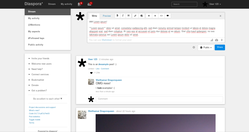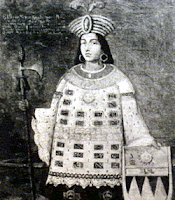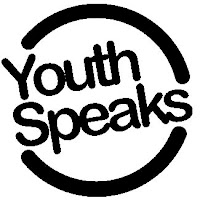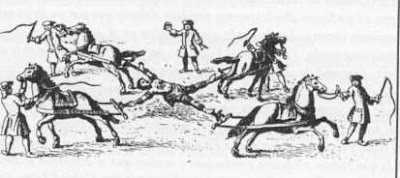Sunday, October 31, 2010
That's how miwa Caeran was born -- or would she be reborn since it's on Second Life? Either way, I'm stuck a few inches from where miwa was born because of technical difficulties.
I' still worried that as society plays in virtual reality will not pay enough attention to "real world" issues and civil liberties will be destroyed right under our noses. I keep thinking about the comments in the documentary "Unconstitutional" that the USA PATRIOT Act was not the legislation unanimously agreed upon and was printed at 3 a.m. and voted on at 11 a.m. Who had time to read it? But then I wonder how many people are on Second Life at 3 a.m.? If we divided up the hundreds of pages of the Act, would there be enough people to read it? And discuss it? And help guide the decision for the legislators' vote at 11 a.m.?
Many years ago I took an old fashioned storytelling class in an Early Childhood Education class. I decided to tell the story of a girl who died of the "atom bomb disease". Someday I'd also like to tell the story of children in the Japanese internment camps and the story of children whose parents were detained after 9/11 or who were forced to register, based on their country of origin. Hopefully games can tell stories as well so we as a society don't keep making stupid mistakes that cost lives. Here's a link to my version of Sadako and the Thousand Cranes http://wserver.scc.losrios.edu/~mcgratm/movie5.html (warning: this was my one and only class and I'm not a good story teller -- yet!).
social media
Virtual Guantánamo
I did do searches on "political documentaries" and "Sundance Films," and other seemingly relevant terms but to no avail. Mostly I got text advertising. The atmosphere was appropriately Haloweeny but I found the virtual rats scurrying about a little upsetting. I could tell that some people were talking to me just in a basic flirty type of way which made me uncomfortable. And it seemed like I was privvy to other people's conversations, which didn't really make much sense.
In May I saw the film Life 2.0 and wrote a review for The Guardsman.
I watched the description of the Guantánamo "game" in 2.0 and have absolutely no desire to experience it. I feel like that kind of replication is preaching to the choir. People who would find themselves in the position of exploring how horrible the prison is probably already know it's horrible. I think it's more important to provide people with some sort of action they can take to help positive outcomes result.
The horror of the situation is easy to parlay and the movie did say something that I must have heard before but that never resonated and would probably resonate with people who are more conservative than I am and that is that allowing violations on treatment of prisoners of war gives permission to other countries to treat our people negatively.
I believe the film said a lot of important things but it was frustrating to me because I felt it focused on too many topics. It's hard to realize how important each individual story is when it is juxtaposed with about ten other situations which are equally egregious. I feel like treatment of the prisoners and going deeper into the identities of those people who are in the prison would have been helpful because some of them are bad people but not necessarily all of them.
The story of the family that was taken as prisoners was equally compelling and represented a different experience that needed to be addressed. I would have liked to have known more about them, where did the younger children go, what made the government suspicious (if anything).
The interview of you at BAVC was also interesting, but It seems like having it be virtual in Second Life didn't necessarily add anything to it. Couldn't it have been a regular video?
Mixx it Up

I was never into video games or online virtual sites so after navigating through Second Life, I was not having a good time. I understand the concept and it can be entertaining for people of interest but not for me. I actually found it a little childish but I admit I did have laugh creating my avatar which I named ZellyBoo Katana, which kind of made me feel like a kid again. Overall I was not a fan of the website.
Browsing around, I came across a site that is more of my taste. Its called Mixx at www.mix.com, is a general social news site that has different categories for the types of news. It can range in topics it covers from business to music to health and much more. The fun part of this site is the ability to create your own groups that you can post and share news with other users. It gives you the advantage to tailor your sources and basically become the editor in your style. An awesome site that should be checked out.
My Virtual Reality

As far as looking for other virtual worlds, I came across this game called Sim 3. It is being released on X box and Play Station this week and you can also play it on some of the newer smart phones. This is the third generation of this game and seems very popular and gets very good ratings. http://www.metacritic.com/search/all/sims+3/results It seems to have the same concept as the second life format, picking a character and name him or her. Picking your own style, color and naming you virtual self. Then going into your new community and interacting with others. I wonder if games like this will help people meet in real life? Maybe some love connections or making new friends. It seems as if the possibilities are endless and also very exciting!!
I did come across a few virtual documentaries and I like this one http://www.bing.com/videos/watch/video/virtual-violence/beb778cdf5c4bcc12b1abeb778cdf5c4bcc12b1a-256926417205?q=vitural%20documentaries&FROM=LKVR5>1=LKVR5&FORM=LKVR8 it has to do the old question is there a too much violence in the virtual world, such as video games. This short documentary that I found on Youtube.com is done all in a virtual format.
As a little side note with this weeks movie and making it easy for people to leave a comment I ask.... Does any thing our government really surprise anyone anymore?
Not Quite Yet The Matrix...
In the clip, one of the avatars greatly resents "visitors" visiting the mosque with their shoes on and wants to force everyone's shoes off. This got me thinking to how are these worlds governed?
Most of us were born into or adopted the governance of our respective countries, states, schools, clubs, or homes. In virtual worlds rules and politics were developed only recently. And, in a political sense, as these worlds evolve into more complex states and enjoy (or suffer) a wider diversity of visiting cultures, will the rules adopted become more like those in the "real" world or will virtual politics be able to iron out some of the existing kinks? If so can those fixes be brought back to and implemented in the "real" world...
"The paradox for Linden Lab was how to realize the ongoing creation of Second Life in a way that was consistent with their idealized vision of individual creativity and liberty, while remaining indisputably and unavoidably the single most powerful institutional player on the scene." -Legitimate Question, Terranova

In the ever growing digital media world, Vimeo has emerged as one of my favorite video hosts. Far too many times have I navigated through other video sharing sites and been flooded with advertisements and spam! This site weeds out a lot that unwanted content, it doesn't permit commercial videos, gaming videos, pornography, or anything not created by the user to be hosted on the site. This is exciting because I visit these sites for specific reasons and slimming down the crap content makes for a far better experience. It's fair to
say that Vimeo caters to visual arts and is an artistic outlet, which provides a lot of beautiful imagery.
With roughly over 3 million users, about 16,0000 new videos uploaded daily, 10% of which are in HD. Speaking of HD, Vimeo was the first video sharing site to support High Definition playback, (720p) the majority of time that I watch something on Vimeo, the quality is far superior to that of Youtube's. Honestly I think the minimal approach and the focus on quality over quantity has won me over. This site is where it's at!

Diaspora

 When Second Life first came out, I thought it was going to be the coolest thing online. I promptly signed up for an account and a few days later realized what I had done, and wondered, "Why?" Given what the definition implies, I wondered what was I going to do with yet another life? I already had a life in school, a life with friends, and a life with my family, why would I want one online?
When Second Life first came out, I thought it was going to be the coolest thing online. I promptly signed up for an account and a few days later realized what I had done, and wondered, "Why?" Given what the definition implies, I wondered what was I going to do with yet another life? I already had a life in school, a life with friends, and a life with my family, why would I want one online?Saturday, October 30, 2010
Not My Cup of Tea
But one positive thing I did find was a section devoted to Movietickets.com. It was set up like a theater and if you clicked on different movie posters, it would take you to the website and find where that movie was playing in your area. One documentary I found that they had listed was Michael Jackson's "This is It."
I'm kind of an architectural history nerd so I thought it was kind of cool when I went to the website http://www.nonprofitcommons.org/ and found a group called Neenah Historical Society. On October 25th, 2010 they gave a virtual presentation on the Octagon Ward house in Neenah, Wisconsin. They wanted to raise awareness and funds for this historic house which was built in 1850. I thought that was pretty cool that they did this whole virtual presentation. Here are two sites to go to about this presentation. The first one is of photos from the presentation and the second in a site on the Society.
http://www.flickr.com/photos/amoration/5114168495/
http://www.neenahhistoricalsociety.org/
“I didn’t invent Thug Life, I diagnosed it!” -Tupac Shakur
Friday, October 29, 2010
Poltical Story telling in the virtual world
http://www.youtube.com/watch?v=d_bID58UlLo&feature=player_embedded
This website a great example in using the avatar world to tell a story.
The website is in the form of a blog run by a nonprofit. The recent post was on October 27th, 2010 about Thailand tapping into the virtual world to promote tourism.
"The Bangkok Post reports that the government of Thailand is launching a new virtual world to highlight the business and tourism opportunities in the southeast asian country this November. Called "Thailand Planet" the web-based virtual world seems to promise quite alot,"
Thursday, October 28, 2010
SoundCloud

In today's age of technological excess, I have found that it can be difficult finding social media sites that match my exact interests. I have run the gamut on YouTube, Facebooked my face off, and to be honest, I have grown dissatisfied with both of these sites--they just aren't that exciting. I mean, who the hell isn't using Facebook or YouTube nowadays? It's time to move onto more exciting things--which I have precisely done.
On my constant quest to find something innovative or exciting, I was guided to SoundCloud. SoundCloud is an online audio distribution platform. Basically--what YouTube is to videos is what Soundcloud is to music, and more. The site essentially allows musicians, djs, and music listeners alike, to upload and listen to other artist profiles. You create your own profile (or not), upload your tunes, and then share them with the world. It might sound like an old concept, but it's quite extraodinary. You can enjoy your favorite music without all of the hassles of advertisements or junk mail. It truly is an independent music platform. I'd much rather immerse myself in music than be a part of the banal aspects of Facebook and YouTube.
Democratizing Media
I have seen this Resurrection a few times and I have always thought it was a great, respectable film. It is definitely bizarre to hear Tupac narrate the video himself, and I say bizarre in the sense that it is almost a bit eery but so effective. The fact that this was created by various interviews and sound bites by Tupac himself was brilliant because there is a flow to this film that almost makes you forget that his words weren't intended for this specific documentary. I think this film is a perfect example of how mash-ups and montages can be so productive. After reading the Recut Reframe Recycle article it made me think about all of the mash-up-styled videos or shows I truly enjoy. I never thought about the copyright issue that could arise from this genre of film-making, etc. I believe it is a perfect example of using social media resources to their fullest potential. The book Blogs,Wikipedia, Second Life, and Beyond by Axel Bruns lays out why "produsage" as he calls it, works so effectively. He examines Currenttv, youtube, and even the Colbert Report among others and discusses why mash-ups are so creatively effective and why they are a positive thing for society in general. You can read excerpts here:
http://books.google.com/books?id=oj2A68UIHpkC&lpg=PA238&ots=z-3_Zi7zLt&dq=current%20tv%20mashups&pg=PA238#v=onepage&q=current%20tv%20mashups&f=false
My favorite tv channel is Current in fact, and the goal of Current was to "democratize the media" and I think it has done a swell
job in doing so. Their shows consist of viewer-created content that are related to each other or have the same idea. The other shows
consist of mash-ups they create themselves. I watch because I learn so much in a short amount of time and no matter what the topic
may be, I am also engaged. I think this style of media they have adopted is very effective and it's definitely not going out of style any
time soon.
Wednesday, October 27, 2010
"Tupac: Resurrection" and the Mash-up

"Resurrection" serves less as a biography and more as a posthumous memoir through the use of mash-ups which allow the film to be narrated by Tupac Shakur years after his death. According to the film's press notes "Tupac loved doing interviews and would answer questions at great length", which gave the film's directer much material to work with. Materials which may otherwise be protected under copyright law fall into a somewhat gray area when it comes to mash-ups like the one done for this feature length film. "The courts tell us that fair use should be 'transformative'--adding value to what they take and using it for a purpose different from the original work." Mash-ups are a means of "quoting" other material to create a commentary and new piece of popular culture. While the idea of allowing Tupac posthumously to create his "own commentary" is an interesting one, it falls short in this film when contradictions about his life and music begin to emerge and there is no way to call on him for further explanation. When footage/photographs/voice recordings/etc are mash-uped this can often happen as the author of the work is able to create their own "truth" and not be held responsible for supplying more substantial information
New technologies allow everyone a platform to make their own realities and commentary. The space limitations of many types of media, such as Twitter's 140 characters, means that information is given as soundbites and lets the author off the hook for having to explain in more depth or cite sources. In addition, technology offers us a sense of privacy, and detachment, even as we're sharing these things with the entire Web. The online mentality is one of entitlement and total freedom, no one has ownership over anything and the truth changes depending on who is doing the typing. Most popular mash-ups are purely for entertainment, but in addition to parady and comedy, there is a great breadth and diversity of potential fair usage that is taking place in this new creative space that mash-ups allow. However, one positive thing that funny or silly mash-ups can remind us is that the First Amendment doesn't only protect serious and meaningful works for freedom of expression, but makes a wide array of things eligible for protection under "fair use". New forms of media are often criticized compared to the dominant medium of the moment and many have managed to overcome their early deficiencies and become very important to society. Whether or not this path will be followed by mash-ups is yet to be seen.
Monday, October 25, 2010
Tupac: Recut, Reframed, Recycled


From Tupac Amaru
to Tupac Shakur
by Jim McKinney
The Execution of Tupac Amaru [Tupac_amaru_execution.jpg]
(Enciclopedia Historia Argentina de Diego Abad de Santillan)
First, on a serious note…
"Those who cannot remember the past are condemned to repeat it."
George Santayana
In a book of history that I have been re-reading these past few weeks, The Open Veins of Latin America, a book presented to President Barak Obama as recommended reading at the Summit of the Americas by Venezuelan President Hugo Chavez last year, the author Eduardo Galleano begins with a startling quote from a revolutionary proclamation issued in 1809 in La Paz, Bolivia: “We have maintained a silence closely resembling stupidity.”
Later in the book, as Galleano details the rape and looting of the continent, he writes about the uprising in Peru led by Tupac Amaru, Tupac Shakur’s namesake that took place thirty years before that proclamation:
“In 1781 Tupac Amaru laid siege to Cuzco. This mestizo chief, a direct descendant of the Inca emperors, headed the broadest of messianic revolutionary movements… Mounted on his white horse, Tupac Amaru entered the plaza of Tungasuca and announced to the sound of drums and pututus that he had condemned the royal [viceroy] Correidor Antonio Juan de Arriaga to the gallows…. A few days later Tupac issued a decree liberating the slaves. He abolished all taxes and forced labor in all forms. The Indians rallied by the thousands to the forces of the ‘father of all the poor and all the wretched and helpless…;’ in the end, betrayed and captured by one of his own chiefs, Tupac was handed over in chains to the royalists. The Examiner Areche entered his cell to demand, in exchange for promises, the names of his rebel accomplices. Tupac Amaru replied scornfully, ‘There are no accomplices here other than you and I. You as oppressor, I as liberator, deserve to die.’”
“Tupac was tortured, along with his wife, his children, and his chief aides, in Cuzco’s Plaza del Wacaypata. His tongue was cut out; his arms and legs were tied to four horses with the intention of quartering him, but his body would not break; he was finally beheaded at the foot of the gallows. His head was sent to Tinta, one arm to Tungasuca and the other to Carabaya, one leg to Santa Rosa and the other to Livitaca. The torso was burned and the ashes thrown in the Río Watanay. It was proposed that all his descendants be obliterated up to the fourth generation.”
Such was the savagery of some 200 years ago. Then this past week, I watched the almost-two-hour-long Tupac: Resurrection. To me the movie was depressing and it made me feel angry at the pathetic ways in which things have evolved in human society over the past centuries. What a waste. Such promise and talent squandered in modern-day “thug culture,” the gruesome realities of which were not really shown in the movie—realities that are getting even worse now with Latin American drug cartel wars escalating to unheard of levels of violence and terror.
But then movies that glamorize thug life go way back, from the Great Depression-era “Come and get me, copper!” thrillers of Jimmy Cagney, to Coppola’s operatic Godfather series, and now the latest on HBO, Scorsese’s glossy Boardwalk Empire soap opera. We fantasize, glamorize, and romanticize thug life to death (pun intended), Tupac Shakur’s contradictory semantics and pretzel logic notwithstanding.
But then I have to admit, I am a 64-year-old white guy, and I may be missing something. I am sure that the sensitive comments from the New York Times reader following film review by A. O. Scott resonated with millions of Shakur’s fans:
“… Lauren Lazin has done a very good job of sharing with the world the many dimensions of a man who was loved, hated, misunderstood, and understood all at the same time. This movie is for Tupac Shukur's fans. It's not to feed into the controversy surrounding his death, it's not meant to explain the East Coast/West Coast beef. It's meant to give you insight to the man, his convictions, his inner and outer struggle, and why he was who he was and believed what he believed so passionately. If you want to see those beautiful brown eyes and that infectious smile again, if you want to be moved and see and feel his motivation, if you want to be entertained; then you don't want to miss this movie. I f you want more than that, this is not the movie for you.”
 Ok, point taken. And I realize, having had not that long ago a teen-aged son who was into poetry slams and passionately defended, and still defends, hip hop music, that there is a progressive side. Out of what I believe was initially a criminally inspired genre, preoccupied with turf wars, drug money, gang affiliations, pimping and abusing women, and focusing on “bling” and prison as a rite of passage à la Claude Brown’s Manchild in the Promised Land, something good had to come (didn’t it?). And the music has definitely grown in its international influence and inspirational manifestations.
Ok, point taken. And I realize, having had not that long ago a teen-aged son who was into poetry slams and passionately defended, and still defends, hip hop music, that there is a progressive side. Out of what I believe was initially a criminally inspired genre, preoccupied with turf wars, drug money, gang affiliations, pimping and abusing women, and focusing on “bling” and prison as a rite of passage à la Claude Brown’s Manchild in the Promised Land, something good had to come (didn’t it?). And the music has definitely grown in its international influence and inspirational manifestations.
Tupac’s mother, Afeni Shakur, interviewed on ThugArmyLife.com, talks about her struggles over the course of her own lifetime, taking inspiration from Miriam Makeba in her own youth, her political activism, later drug addiction and rehab, and how she is now trying to salvage something good from what has happened to her son. She admits that she is from another generation from the hip hop generation, and may not always understand or agree with them. Her efforts are commendable, working with children in her organization, Pac’s Kids, the summer camps, publishing Tupac’s hip hop music to finance the Tupac Amaru Shakur Foundation, and growing organic vegetables on her 56-acre farm in North Carolina.
 Now hip hop is everywhere, from full-on high school classroom curriculum to milder Sesame Street versions, in poetry slams, and efforts like those at Youth Speaks, which “…aims to deconstruct dominant narratives in hopes of achieving a more inclusive, and active, culture…” encouraging young people “to express themselves using their own vernacular...” in the believe that “having knowledge, practice, and confidence in the written and spoken language is essential to the self-empowerment of an individual… combating illiteracy, alienation, and silence, creating a global movement of brave new voices bringing the noise from the margins to the core.” Right on.
Now hip hop is everywhere, from full-on high school classroom curriculum to milder Sesame Street versions, in poetry slams, and efforts like those at Youth Speaks, which “…aims to deconstruct dominant narratives in hopes of achieving a more inclusive, and active, culture…” encouraging young people “to express themselves using their own vernacular...” in the believe that “having knowledge, practice, and confidence in the written and spoken language is essential to the self-empowerment of an individual… combating illiteracy, alienation, and silence, creating a global movement of brave new voices bringing the noise from the margins to the core.” Right on.
And as testimony to his endurance, Google searches related to Tupac Shakur himself alone number at about 4,240,000 results (in 0.12 seconds), with everything from Tupac Shakur’s life and death, to his music, quotes, lyrics, poems, etc. But checking in with recent music video postings (one week old) at MeFeedia—Media Engine, (“Tupac feat. Busta Rhymes - Lord can you hear me” and “Tupac Breathin Remix by Frozen”) I believe that some things have not evolved all that “m*****f*******” much….
But, on a slightly different note…
However, one thing must be acknowledged. It appears that the film Tupac: Resurrection is a prime example of how the creative and innovative the techniques of mashup and re-mixing can be; i.e., taking pieces of home video, music video, movie video, audio tracks, and other cinematic data sources, and then overlaying, re-editing, inter-cutting and replacing the component parts to make something entirely new and different. In this case, it made it seem like Tupac was actually brought back from the dead just to narrate the movie—very impressive, I have to admit.
Time, time, time—oh, how I wish I had more time! I loved watching some of the other mash-ups that we were given links to for our class assignment this week! Although I really do not have the time to learn how to do any of this at the present moment, I would really like to learn the basics of this sometime in the near future.
As an ESL instructor, I am hoping to make use of documentary films in my classroom. However, I am reluctant to show long-form documentaries in their entirety as it would take up too much class time. I am getting more and more interested in a lot of the short-form user-generated video that is available on the web, but I would also be interested in being able to edit and re-mix my own clips.
French in Action is a language learning program that was produced in part by WBGH in Boston and funded by the Annenberg/CPB Collection. The television course is based on an innovative method developed by Pierre Capretz of Yale University, and part of the success of the program is the way that it uses a lot of video and film clips. After a common word, phrase, or expression is introduced, for example, a barrage of very short video and film clips follow in rapid succession to illustrate how it is used. I would love to be able to excerpt language features from documentaries my students have seen in class to illustrate and reinforce the specific grammar and vocabulary they are supposed to be focusing on.
I certainly hope that the findings of the study, “Recut, Reframe, Recycle: Quoting Copyrighted Material in User-Generated Video,” conducted by the American University's Center for Social Media and Washington College of Law holds up in the courts. They conclude that “many uses of copyrighted material in today's online videos are eligible for fair use” including: “satire, parody, negative and positive commentary, discussion-triggers, illustration, diaries, archiving and of course, pastiche or collage (remixes and mashups), all of which could be legal in some circumstances.” I got even more interested as I watched several of the mashups listed in their “Researcher's Top Five Videos in Each Category,” including, Satire and Parody, Negative or Critical Commentary, Positive Commentary, Quoting in Order to Start a Discussion, Illustration or Example, Incidental Use, Personal Reportage/Diaries, Archiving of Vulnerable or Revealing Materials, and Pastiche or Collage.
[http://www.centerforsocialmedia.org/fair-use/related-materials/documents/recut-reframe-recycle]
 However, scanning through just some of the “Top 10 YouTube Mashups of All Time” was positively daunting in just seeing some of how much is out there. I cannot even begin to imagine how one goes into all this without sinking into a swamp of video quicksand…
However, scanning through just some of the “Top 10 YouTube Mashups of All Time” was positively daunting in just seeing some of how much is out there. I cannot even begin to imagine how one goes into all this without sinking into a swamp of video quicksand…
[http://blog.programmableweb.com/2010/02/02/top-10-youtube-mashups-of-all-time/]
I thought the video mashup “True Grit + Toy Story 3 = Toy Grit” was a real production pearl.
[http://blogs.indiewire.com/thompsononhollywood/2010/10/14/video_mash-up_true_grit_toy_story_3_toy_grit/]
And to me “Donald Duck Meets Glenn Beck in ‘Right Wing Radio Duck’” (October 2, 2010) was a work of socially responsible genius.
www.rebellious[http://wpixels.com/]
 Even some of the less complicated mash-ups were rather sophisticated in their art and subtle messages. For example, “MTV/VMAs Remix: Kanye West Interrupts Obama’s Speech” featured in New York Times columnist Robert Mackey’s blog, “The Lede,” appeared simple yet delivered a very effectively humorous message .
Even some of the less complicated mash-ups were rather sophisticated in their art and subtle messages. For example, “MTV/VMAs Remix: Kanye West Interrupts Obama’s Speech” featured in New York Times columnist Robert Mackey’s blog, “The Lede,” appeared simple yet delivered a very effectively humorous message .
[http://thelede.blogs.nytimes.com/2009/09/15/the-inevitable-wilson-kanye-mashup/]
Mashups on YouTube such as, “aMazing Movie Mashup Music video” and “Michael Jackson - Thriller (Monster Movie Mash-Up)” were also fun to watch.
I am convinced that I would like to learn the basics of this technology, but how and when will I ever find the time….
<> <> <> <> <> <> <>




